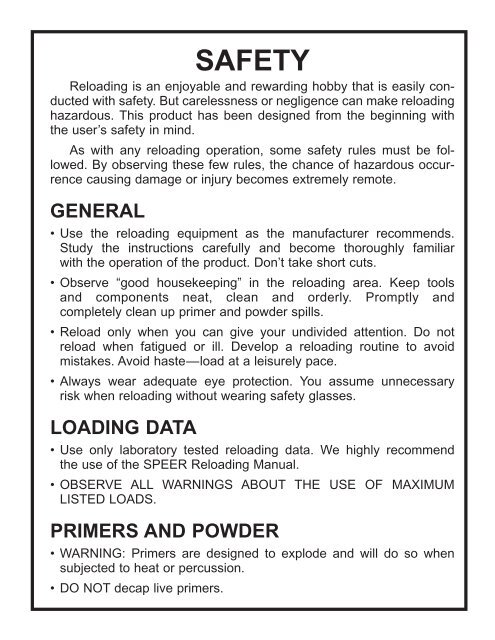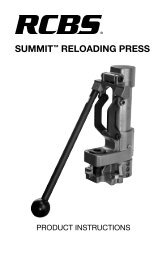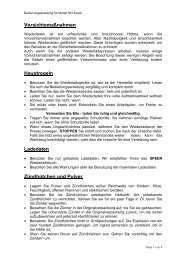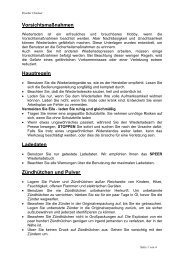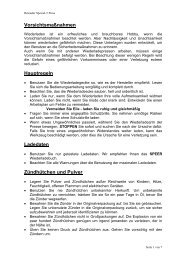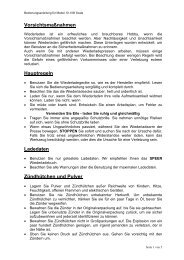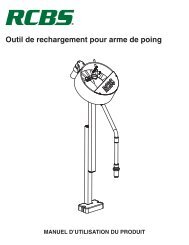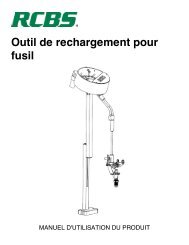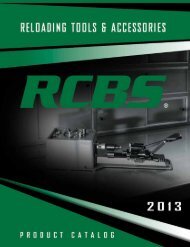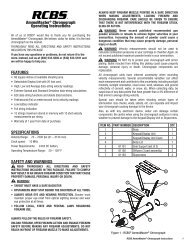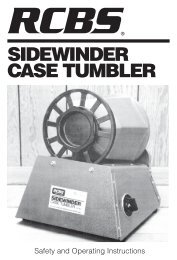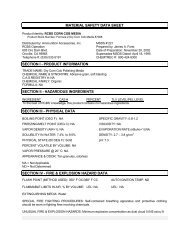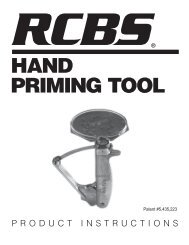Lube Die Instructions - RCBS
Lube Die Instructions - RCBS
Lube Die Instructions - RCBS
You also want an ePaper? Increase the reach of your titles
YUMPU automatically turns print PDFs into web optimized ePapers that Google loves.
SAFETY<br />
Reloading is an enjoyable and rewarding hobby that is easily conducted<br />
with safety. But carelessness or negligence can make reloading<br />
hazardous. This product has been designed from the beginning with<br />
the user’s safety in mind.<br />
As with any reloading operation, some safety rules must be followed.<br />
By observing these few rules, the chance of hazardous occurrence<br />
causing damage or injury becomes extremely remote.<br />
GENERAL<br />
• Use the reloading equipment as the manufacturer recommends.<br />
Study the instructions carefully and become thoroughly familiar<br />
with the operation of the product. Don’t take short cuts.<br />
• Observe “good housekeeping” in the reloading area. Keep tools<br />
and components neat, clean and orderly. Promptly and<br />
completely clean up primer and powder spills.<br />
• Reload only when you can give your undivided attention. Do not<br />
reload when fatigued or ill. Develop a reloading routine to avoid<br />
mistakes. Avoid haste—load at a leisurely pace.<br />
• Always wear adequate eye protection. You assume unnecessary<br />
risk when reloading without wearing safety glasses.<br />
LOADING DATA<br />
• Use only laboratory tested reloading data. We highly recommend<br />
the use of the SPEER Reloading Manual.<br />
• OBSERVE ALL WARNINGS ABOUT THE USE OF MAXIMUM<br />
LISTED LOADS.<br />
PRIMERS AND POWDER<br />
• WARNING: Primers are designed to explode and will do so when<br />
subjected to heat or percussion.<br />
• DO NOT decap live primers.


